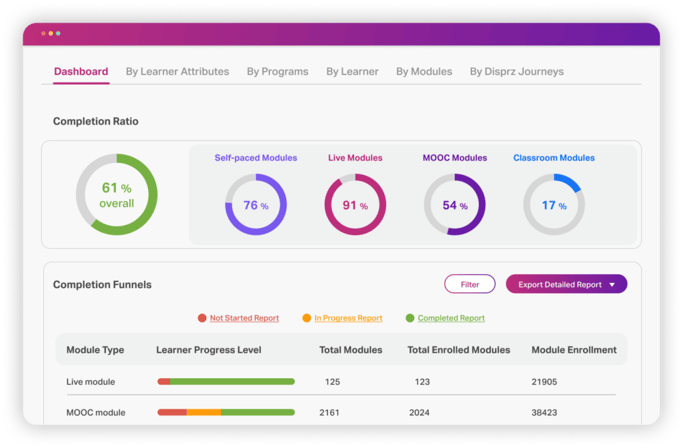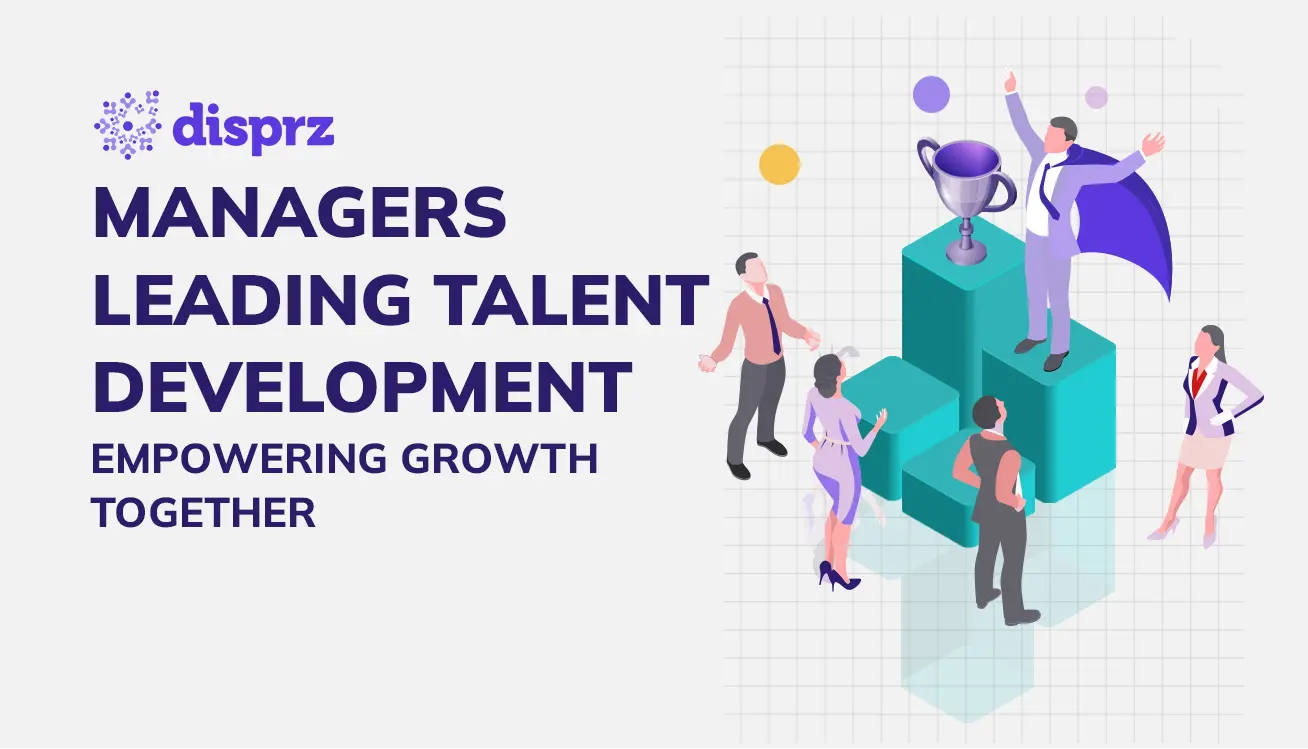
6 min read
• 13 Oct 2023
How To Choose The Right Learning and Development KPIs To Evaluate ROI
Are your L&D efforts aligned with organizational goals? Here’s how to select learning and development KPIs to evaluate the ROI.
-
eBookEmployee Upskilling - A Detailed Blueprint For Building A Skills-Driven Learning Culture
A study proved that a 12-month workforce training program prioritizing the right skills produced a 250% return on investment (ROI) within 8 months of its completion. Whether through training, leadership development, or upskilling, it is critical for organizations to invest in driving learning and development KPIs (key performance indicators) initiatives to improve skills, knowledge, and employee performance.
The key to L&D success is not only implementing these initiatives, but also proving their success. To do this, you must identify the right learning and development KPIs. By setting and tracking the right KPIs, organizations can understand the ROI and training effectiveness of these learning interventions and make informed decisions about future learning investments.
How To Select The Right KPIs For Corporate Learning and Development
The judicious selection of learning and development KPIs ensures that your L&D programs are at the forefront of driving business outcomes and reaching organizational goals. L&D employee training metrics enable you to keep track of how employees respond to a course, the number of employees trained, how well they performed on knowledge assessments, or the number of hours spent utilizing an LXP. However, to truly gauge the training effectiveness of an L&D program, it is essential to combine traditional L&D metrics with business goals to form the foundation of learning and development KPIs.
Learning professionals recognize the need to be strategic in their selection of learning and development KPIs when evaluating the ROI. Sterlite Technologies CHRO Manav Lalotra, an industry-leading integrator of digital networks, emphasizes on how important it is to pick the right KPIs when trying to measure the ROI of learning interventions.
In a recent interview with Disprz, he shared insights on how Sterlite Technologies chooses the right KPIs to calculate the ROI to get the desired outcome:
3 Steps to Choose The Right Learning and Development KPIs
1. Ensure Employee Training Addresses Business Goals
It’s best to collaborate and work with business leaders to identify performance gaps and establish L&D KPIs with the necessary information to navigate the design and evaluation of learning objectives and training materials.
This partnership allows for aligning training objectives with the organization’s larger goals. It ensures that the training program addresses the correct business issues and drives desired results.
2. Align Learning & Development With Your Organizational Strategy
Aligning learning and development KPIs to the identified organization’s goals is vital.
This process helps ensure that the L&D programs drive real business results, like bridging critical employee performance gaps and that the chosen key performance indicators will accurately measure the program’s impact.
3. Continuously Track Completion & Assessment to Drive L&D
Completion and assessment are integral components of any learning and development initiative. Completion refers to successfully finishing a training program, while assessment evaluates the knowledge and skills acquired during the training. These two elements are interconnected and crucial for ensuring the effectiveness of the L&D initiative.
The completion rate is used as a metric to evaluate employee engagement and the program’s success, while assessment tools such as quizzes, exams, and performance evaluations measure the learner’s proficiency. The assessment outcome identifies improvement areas and provides feedback to the learners, allowing them to progress and reach their full potential. Thus, proper completion and assessment are essential to evaluate the ROI of the L&D program and to ensure the effectiveness and efficiency of the training.
Leverage Learning Technology to Measure L&D KPIs Effectively
Technology plays a prominent role in tracking and measuring L&D KPIs to achieve ROI for learning interventions. Organizations can gather, store and analyze large amounts of data with a learning management system (LMS), which enables them to gain insights and make informed decisions about the effectiveness of their learning interventions.

Using a technology platform, like AI-powered Disprz LXP, offers a unified view of various learning metrics crucial in determining L&D ROI. It allows organizations to track essential insights and data quickly, identify patterns, and gain a deeper understanding of the areas of their employee training program that need improvement. It provides a centralized platform for tracking, managing, and reporting on training data and analytics and reporting tools to help identify trends and areas for improvement. It can also facilitate the integration of data from other systems, such as HR and CRM systems, to track the impact of the training on business metrics such as employee retention, customer satisfaction, and sales.
You can check out the Disprz LXP platform in action to see how it can help you achieve business goals by identifying the right learning and development KPIs.
About the author

Debashree Patnaik
Debashree is a seasoned content strategist at Disprz.ai, specializing in enterprise learning and skilling. With diverse experience in B2B and B2C sectors, including ed tech, she leads the creation of our Purple papers, driving thought leadership. Her focus on generative AI, skilling, and learning reflects her commitment to innovation. With over 6 years of content management expertise, Debashree holds a degree in Aeronautical Engineering and seamlessly combines technical knowledge with compelling storytelling to inspire change and drive engagement.
More Resources
4 min read
• 15 Apr 2024
Unlocking the Power of Managerial Engagement in Talent Development
4 min read
• 09 Apr 2024
Nurturing Excellence in Building Leadership Pipelines
Sign up to get free resources and stay up to date with Disprz!
Discover how Disprz can align learning and upskilling with your desired business outcomes.





